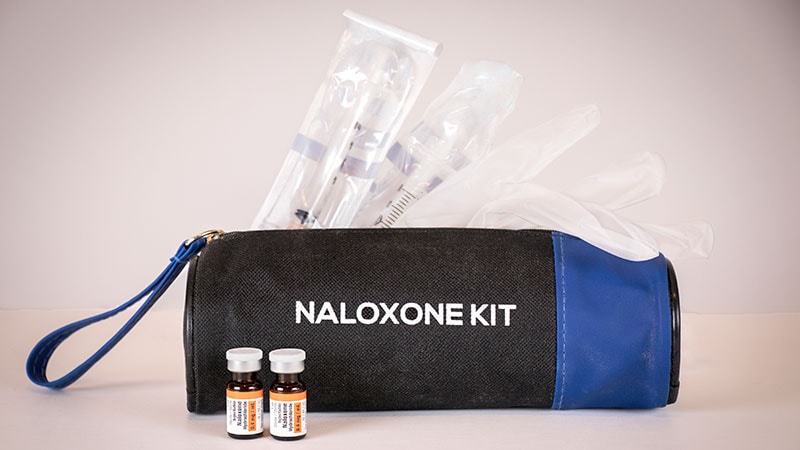New FDA Guidance Aims to Boost Access to Opioid-Reversal Drug
The US Food and Drug Administration (FDA) has issued guidance that will make it easier for harm reduction programs to distribute the opioid-reversal drug naloxone.
The new guidance exempts harm reduction programs from certain requirements of the drug supply chain security act for the distribution of FDA-approved naloxone products during the opioid public health crisis.
Harm reduction programs “help save lives by making naloxone available in underserved communities,” Marta Sokolowska, PhD, deputy center director for substance use and behavioral health, Center for Drug Evaluation and Research at the FDA, said in a statement.
“The agency intends to stand by these efforts by supporting harm reduction groups’ ability to acquire FDA-approved naloxone products,” she added.
AMA Welcomes FDA Action
Sokolowska said the hope is this guidance will address some of the obstacles to naloxone access and facilitate the “life-saving work of harm reduction programs by aiding their ability to obtain naloxone directly from manufacturers and distributors while expanding public availability of this critical medicine.”
However, she noted the FDA recognizes that this action alone is not enough.
“While the guidance supports harm reduction programs’ ability to acquire naloxone, it does not address other challenges to access that communities face, including the current prescription-only status of FDA-approved naloxone products. Thus, there is still more work ahead of us as deaths from drug overdoses remain at historically high levels,” Sokolowska said.
The American Medical Association (AMA) said it welcomes the FDA guidance.
In a statement, Bobby Mukkamala, MD, chair of the AMA Substance Use and Pain Care Task Force, said that throughout the drug overdose epidemic, harm reduction organizations have accomplished “amazing work despite shoestring budgets and bureaucratic challenges.”
The new guidance offers “regulatory clarity for harm reduction organizations to purchase naloxone so more will be distributed in communities. This is just one step in a multi-pronged effort to combat the drug overdose epidemic,” Mukkamala said.
“Physicians recognize the work of harm reduction organizations and welcome the government’s willingness to remove obstacles as they — day in and day out — save lives,” he added.
Mukkamala noted the AMA “continues to urge physicians to prescribe naloxone to patients at risk of overdose and to others who may be able to save a life from unintentional overdose” while they wait for the reversal agent to become available over the counter.
“Physicians, harm reduction organizations, government, and all others must work together to end the drug overdose epidemic,” he said.
For more Medscape Psychiatry news, join us on Twitter and Facebook
Source: Read Full Article
